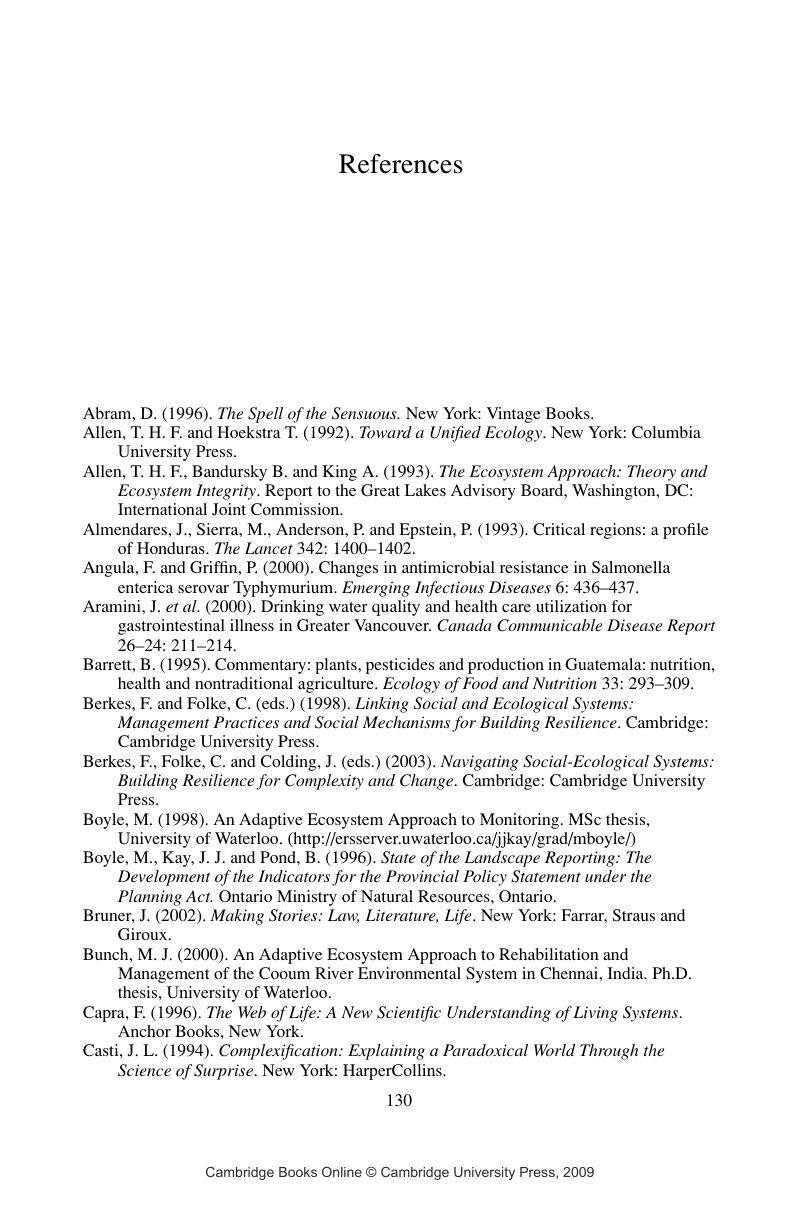Book contents
- Frontmatter
- Contents
- List of figures
- List of tables
- Introduction
- 1 Presenting complaint
- 2 The clinical examination: asking questions, getting data
- 3 Making a diagnosis: synthesizing information from data
- 4 Setting goals: where do we want to go?
- 5 Achieving goals: managing and monitoring
- 6 Responding to change: AMESH and the never-ending story
- References
- Index
- References
References
Published online by Cambridge University Press: 03 December 2009
- Frontmatter
- Contents
- List of figures
- List of tables
- Introduction
- 1 Presenting complaint
- 2 The clinical examination: asking questions, getting data
- 3 Making a diagnosis: synthesizing information from data
- 4 Setting goals: where do we want to go?
- 5 Achieving goals: managing and monitoring
- 6 Responding to change: AMESH and the never-ending story
- References
- Index
- References
Summary

- Type
- Chapter
- Information
- Ecosystem Sustainability and HealthA Practical Approach, pp. 130 - 134Publisher: Cambridge University PressPrint publication year: 2004

